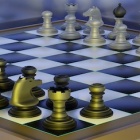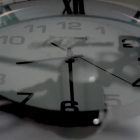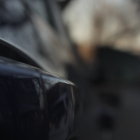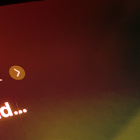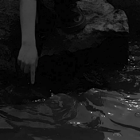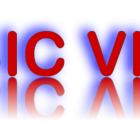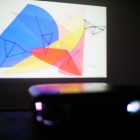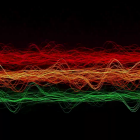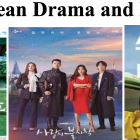DMS Student Showcase 2021
DMS 418/518 Landscape Projections

“Landscape Projections” is an advanced special topics course exploring landscape as a medium, predominantly through the lens of time-based media. “Projections” implies cinematic presentation, but we expand this idea of projection (from Latin projectio(n-), from proicere ‘throw forth’), exploring ideas around forecasts, mappings, visions, and transmission, as we consider a wide range of artists and filmmakers re-envisioning both the natural and manufactured landscape through cinematic geographies and spatial practices.
From the city to the wilderness, to wastelands and borderlands, we will look to painting, literature, film, video art, land art, sound walks, and experimental geography, among other forms. Within these historical and contemporary works, we will consider ideas of the sublime within natural and industrial landscapes, poetic representations of inner landscapes, film as spatial critique, narratives of displacement, the unearthing of repressed memories and hidden histories, post-human ecologies, as well as contested territories of colonization and exploitation of the earth and its people. Through screenings, readings, discussions, journals, and landscape sketches (audio, video, written, or other media), the class will engage deeply with the topic of landscape, culminating in a final project or research paper.
Jiacheng Ying
The girl and the lake
I was recently inspired by a sentence in a video I saw online. It said why we humans have not found other intelligent lives. Is it because we can’t understand each other’s ways of communicating? In our imagination of intelligent life outside of human beings, these other intelligent life are more or less similar to ours. However, this is something we cannot verify. May be they can directly transmit consciousness, or they are the root system of plants and fungi. Indeed, I think that as human beings, the communication methods we can understand are limited to our five senses. Our society and thoughts are also built on this, so even if other intelligent lives are around us, we cannot understand them. Even in our own human society, we can easily stuck in our own mind, people with different ideas have different ways to communicate with others, which often leads to misunderstandings and even communication barriers.
Jesse Rodkin
Moon juice
Where once we were a nationof direction and optimism, if often misplaced, we now unify solely inour love of moon juice. This country, which claimed for ourselves first the sky and then the stars in a pursuit of patriotism or nationalism, maybe from vitriol ,but always a form of advancement, today finds itself planting flags on its own turf. What can most of us do but sit around consuming the endless media content gushed at us as we watch the slow bleeding-out of American Exceptionalism come to a self-induced head. A snowy backyard, a couple beach chairs with a tiny towel and an old semi-functioning radio, and a hot cup of coffee. At least everyone loves coffee. I was tasked with creating apiece focusing on two distinct landscapes, and creating a working dialogue between the two. The film was shot with a Canon 5D mkiii, 100mm macro lens, and Rokinon24mm prime. The Darth Vader-esque breathing was recorded through a holey tin can, attempting to replicate both a spatial vibe and the sounds of a Covid-19 breathing ventilator.
Cydney Teeter
Rot
ROT is a short experimental film exploring ideas surrounding humans’ physical relationship with the earth and how we occupy it and subsequentlyleave it. It focuses on a local Buffalo cemetery, Forest Lawn, to express this theme. Rather than using cemetery footage for the typical spooky and dramatic aesthetic, or to even focus on grief, this piece uses its imagery to take an almost environmental stance. The concept of how people see and handle the death and the bodies of othersis telling of how we view ourselvesas part of the earth’s system. The audio mix and voiceover of the piece adds to the statementand frames the views of the cemeteryunder this theme. The heavy use of frames within frames and repositioned footage is meant to question how we see these ideas that have become so normalized and engrained in us about life and death and decomposition.
Michael Chernoff
discarding earth(2021)
Forgotten places in cities are often deemed lonely, sad, lacking purpose. A popular belief is these abandoned structures should have a meaning injected back into them. A renovation opportunity for realtors and a historical treatment via restoration. But there are some eyesores I don’t believe should berestored. My video recordings captureone of countless moments where human made constructs are not falling apart but arestill changing. Progress does not need history. This non-historicstatecan be bothfading degradation, new erections, and whatever is in between. The crumbling structure is human culture returning to the sands of time. The crackedasphalt lots are gradual movements underground. The trash strewn fences contextless fragments. Anew home standsprematurely raw, incomplete, without real history. Every place was or is about to be something. Progress is not a starting and ending pointit ceaselessand not necessarily pristine. That which has no history is ignored or discarded. The look of the infantile home original wood frame will be covered upto be forgotten. The people who once occupied fresh structures will be gone as the building slowly deteriorates. People build new things for a sense of progress to continue. But there are no inhabitants at these sites of progress. Once a place is inhabited, we can learn something about progress.
Michael Chernoff
Nowhere to visit (soundscape)
What happens beneath a highway? What did I just see along a freeway? The high-speed road is a non-specific place. No driver or passenger can ever really know where their placedmomentarily. Everything happens as soon as things finish. The traffic is segregated from the ground while objects rush by immaterially. We should not stop to look and listen relying on location and space to be just a glimpse. Outside the road is a real location. There are families walking, fisherman casting lines, cyclists joy riding, and birds cawing where the westside highway meets the water in Buffalo. An insignificant placewhere I can punt bottles and cans to hear them roll and bounce in unexpected ways. Yet the violent symphony of cars zooming is inescapable. In and around the road is a deep opression. Neither the world of the road nor the land it engulfs truly know one another. Compressed it’s the road-zone it is a sound of wailing metal and tolerant inhabitances. A highly populated place with few visitors. A stream the pedestrian would never dive into nor a fish would jump out of much like the water so close by.
REIDUN RICHARDS
BIRDS OF NEW YORK
CONTENT WARNING: FLASHING LIGHTS
Once, when I was 8, a woman screamed at me for feeding pigeons romaine lettuce. “Those flying rats are everywhere!” She yelled, “They’re dirty!”... as if that would change my mind about any kind of hungry animal. Pigeons were one of the few pieces of nature we had to interact within the city, and I’ve always seen them as more than “rats with wings”. They’re as much a part of New York as its famous skyline and restlessness. Birds of New York was created from found footage and photographs from around the state and Brooklyn. Though the city’s rumble has quieted over the pandemic, our birds have been more active than ever. While many despise these pigeons, starlings, crows, or sparrows, they're numerous as people. Between concrete and bricks, these birds have found homes here, much as we all have.







